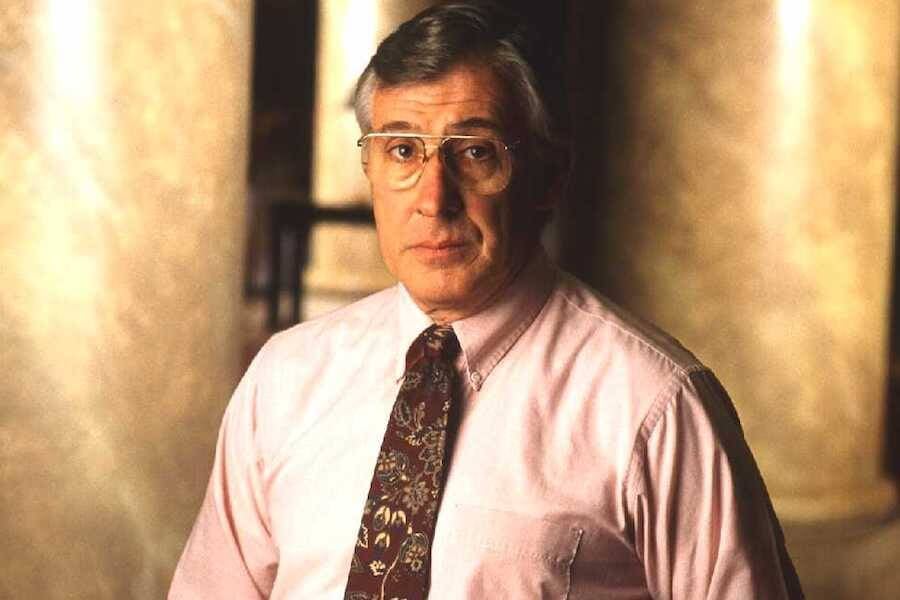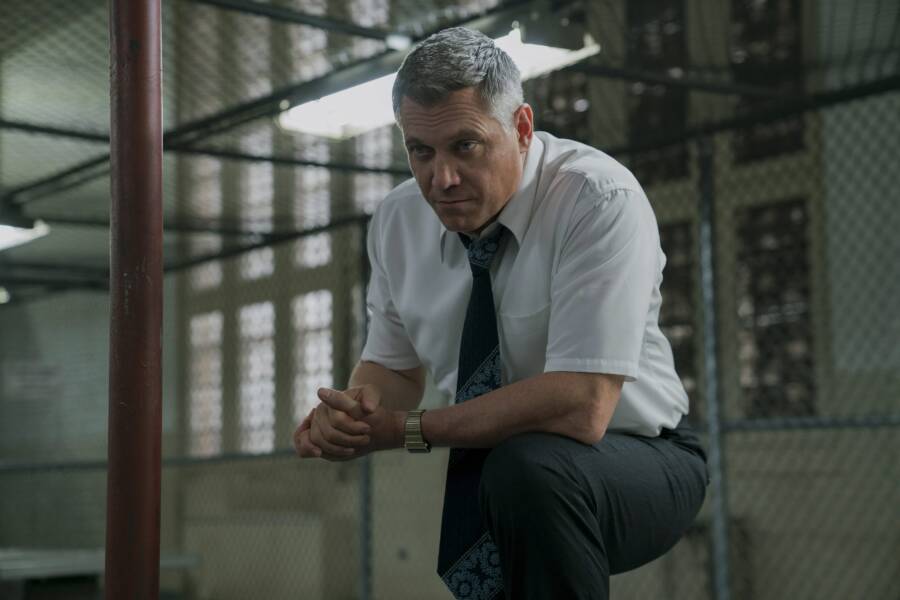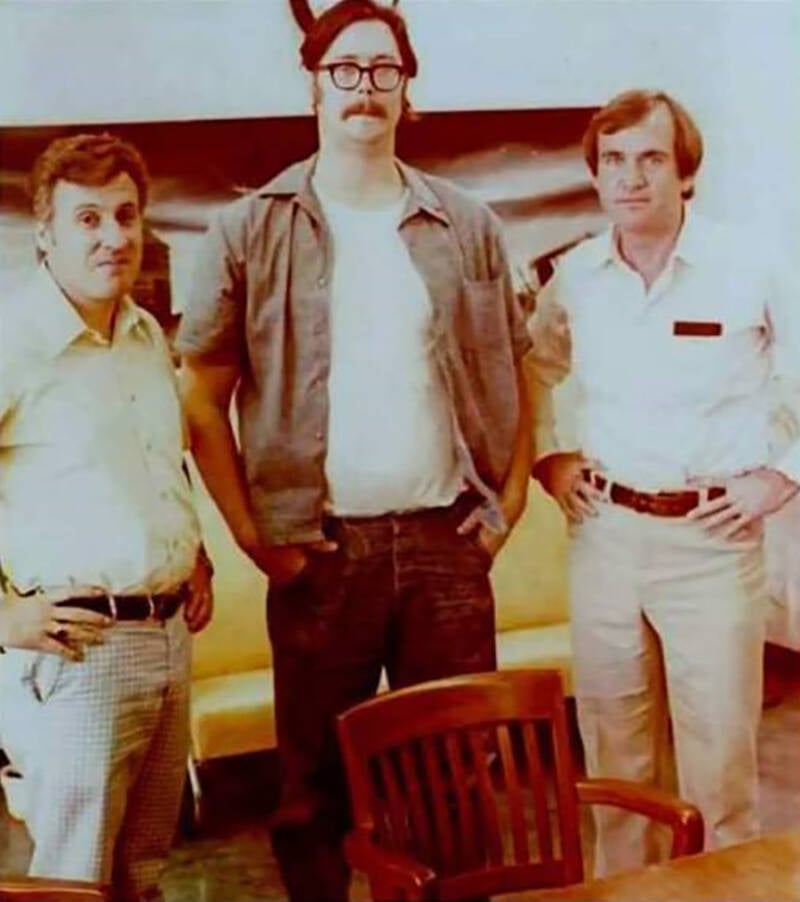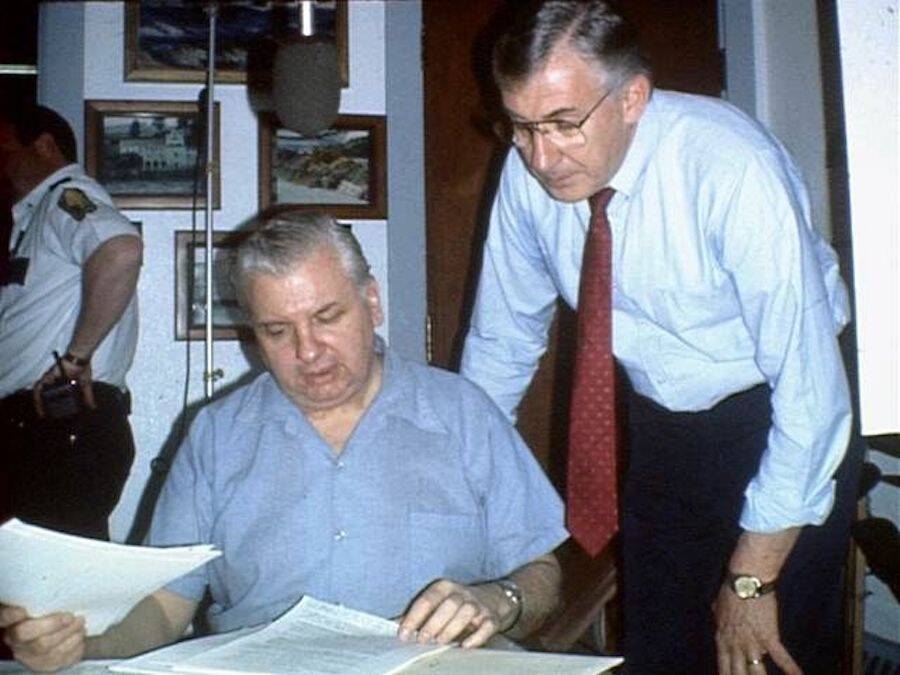The inspiration for Bill Tench on Mindhunter, Robert Ressler interviewed dozens of murderers during his career with the FBI and came up with the very first serial killer profiles.

Paul Harris/Getty ImagesAfter retiring from the FBI in 1990, Robert Ressler worked as a consultant.
Robert Ressler devoted his life to hunting vicious killers. And when he joined the FBI in 1970, investigators did not have a name for criminals like the Ypsilanti Ripper and the Zodiac Killer who claimed multiple victims — until Ressler came up with the term “serial killer.”
But more than that, Ressler helped create the FBI’s Behavioral Science Unit and became the bureau’s very first serial killer profiler. For years, he interviewed America’s worst offenders to establish categories for identifying and tracking serial killers in the hope of catching them.
At a time when no one had yet thought of interviewing killers directly before, Ressler’s profiles helped the FBI track down notorious criminals in the 1970s and 1980s. And though Ressler retired in the 1990s and died in 2013, he lives on to this day as the inspiration for the character of Bill Tench on Netflix’s Mindhunter.
Why Robert Ressler Joined The FBI
Born on Feb. 21, 1937, Robert Ressler joined the U.S. Army in the years after World War II and served at postings around the world. He later worked as a criminal investigation officer in Washington, D.C. Fascinated by criminology, Ressler earned a master’s degree at Michigan State University.

NetflixIn the Netflix series Mindhunter, the character of Bill Tench drew inspiration from Robert Ressler’s real life.
He joined the FBI in 1970 and was recruited into the newly formed Behavioral Science Unit two years later. As crime rates skyrocketed, FBI agents wondered if there was a better way to catch killers.
The new recruit approached the killers from an analytical perspective.
“Of some interest is the fact that serial murders all but disappeared… during World War II, when there were murders on a larger, more wholesale scale, occurring on every battlefront,” Ressler explained in his book, I Have Lived in the Monster, per The Los Angeles Times. “After the war, however, such killings began again… and have since picked up considerable speed.”
While most murderers knew their victims, a certain type of killer seemingly struck at random. These violent criminals lashed out at victims in crime sprees, killing multiple times. Robert Ressler named them “serial killers” after he noticed their episodic sprees reminded him of the movie serials he used to watch as a child, according to The New York Times.
And he would spend the next 30 years of his career with the FBI devoted to catching them.
Inside Ressler’s Dangerous Interviews With Serial Killers
The FBI Academy in Quantico, Virginia, created the Behavioral Science Unit in 1972. The BSU would use the tools of psychology to understand violent crimes, and Robert Ressler was poised to play a crucial role in the new unit.

FBIRobert Ressler (left) stands next to killer Edmund Kemper and his partner John Douglas at the California State Medical Facility.
With the science of serial killers so new, the FBI needed data — and lots of it. So Ressler and his partner, John Douglas, began interviewing dozens of serial killers.
During the interviews, Ressler and Douglas asked the killers about their childhoods, reasons for killing, and methods. They listened as convicted murderers explained the brutal ways they chose victims and carried out their crimes.
Ressler had to stay on the good side of his interview subjects — the interviews were voluntary, so the convict could end the session at any moment.
“He went on face-to-face interviews with the most notorious and successful serial killers at that particular time,” said Roy Hazelwood, who worked with Ressler at the FBI.
Those killers included the likes of Charles Manson, Richard Speck, and David Berkowitz, New York’s “Son of Sam.” But one of the most harrowing stories Ressler recalled in his book Whoever Fights Monsters and later inspired a similar scene in Mindhunters.
During Ressler’s third interview in a locked room alone with Ed Kemper, who stood six feet nine inches tall and once decapitated his own mother in addition to murdering eight women at the age of 21, the buzzer to alert the guards wasn’t working.
And when Kemper noticed, he stood up from his chair, smiled, and told him, “If I went apeshit in here, you’d be in a lot of trouble, wouldn’t you? I could screw your head off and place it on the table to greet the guard.”
But despite the risk to Ressler and the other agents, these interviews helped the BSU create serial killer profiles to catch the killers who were still at large.

Florida Photographic CollectionSerial killer Ted Bundy, shortly after policy recaptured him in 1978.
And this experience helped Ressler create a detailed profile: serial killers were usually adult men with an emotionally or physically abusive past. Often loners, the killers were likely to have abused animals in the past and usually battled sexual demons. Cities attracted killers because they offered “places for the murderer to blend into crowds, hide and become anonymous.”
In 1977, the FBI put the profiles to the test. That December, Ted Bundy escaped from prison. With the serial killer at large, the FBI created a profile based on Ressler’s research.
Robert Ressler and another BSU agent, Howard Teten, had created a psychological assessment of Bundy. The profile, drawing on Bundy’s behavioral and psychological patterns, was included with Bundy’s FBI Ten Most Wanted listing, helping to catch Bundy a mere six weeks after his escape.
How Robert Ressler Created A National Crime Database
In the 1970s, Robert Ressler and John Douglas interviewed 36 serial killers. Early on, it was evident that their research proved that profiling could catch killers. But how could the FBI share its data with local police departments?

YouTubeRobert Ressler interviewing John Wayne Gacy in the 1980s.
Cutting-edge computer technology offered an answer. Ressler and Douglas helped establish a national database known as the Violent Criminal Apprehension Program (ViCAP).
The database allowed investigators to search based on behavioral characteristics, method of killing, and other patterns. Investigators with unsolved cases could check their open cases against the database to narrow down their search, giving them the tools to put together a profile of the killer quickly.
ViCAP evolved into the National Center for the Analysis of Violent Crime, a vital tool for the FBI.
But the work of building the database took its toll. Long hours interviewing brutal killers taxed Ressler and Douglas. And sometimes, the serial killers taunted the profilers.
In the 1980s, Ressler conducted multiple interviews with John Wayne Gacy, who was convicted of 33 murders. According to NPR, during one interview, the killer handed Ressler a painting of a clown. On the back, it read, “Dear Bob Ressler, you cannot hope to enjoy the harvest without first laboring in the fields. Best wishes and good luck.”
When Ressler asked the killer what the inscription meant, Gacy said, “Well, Mr. Ressler, you’re the criminal profiler. You’re the FBI. You figure it out.”
The Real Story Behind ‘Mindhunter’
Robert Ressler retired from the FBI in 1990 but continued to work as a consultant. He advised author Thomas Harris on the infamous character of Hannibal Lecter, and he wrote several books that shared decades of Ressler’s experience hunting killers.
“There are people that are pretty good at this, and I would consider myself one of them, certainly,” Ressler told NPR.
And in 1991, he even joined the defense team for Jeffrey Dahmer, who killed and cannibalized at least 17 people in Wisconsin in the 1970s and ’80s, to help them determine his psychological state — and he walked away feeling more chilled than after any interview before.
Dahmer, Ressler wrote in Whoever Fights Monsters, “encompassed so many usually unrelated dynamics that we may have to make him the prime example of an entirely new category of serial killer.”
John Douglas, Ressler’s former partner, also wrote an influential book — Mindhunter, which inspired the Netflix series of the same name. The character Bill Tench is based on Robert Ressler.
Robert Ressler died on May 5, 2013, but his groundbreaking work continues to influence criminal profilers today.
Investigator Robert Ressler helped found the science of criminal profiling. Next, read about John Joubert, the Eagle Scout who became a serial killer. Then, take a look at these terrifying real paintings by the killer clown, John Wayne Gacy.





